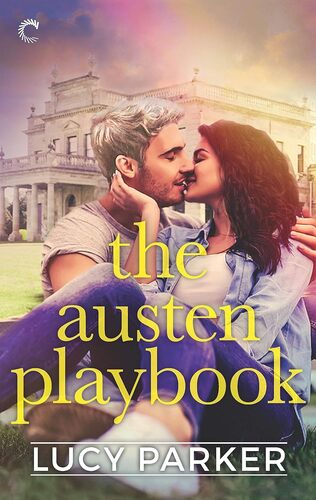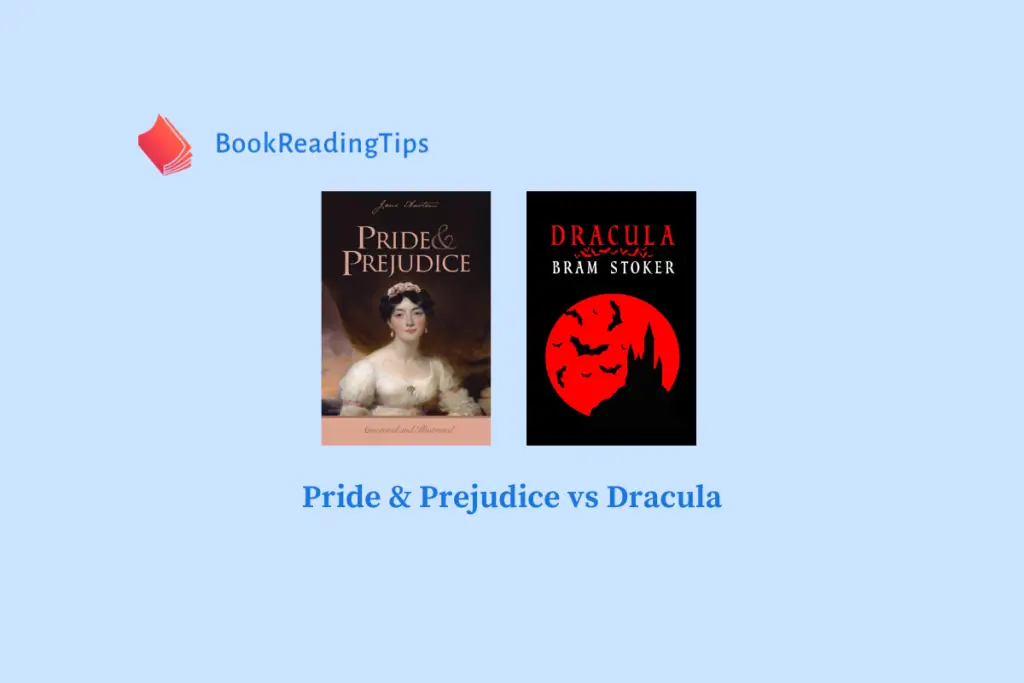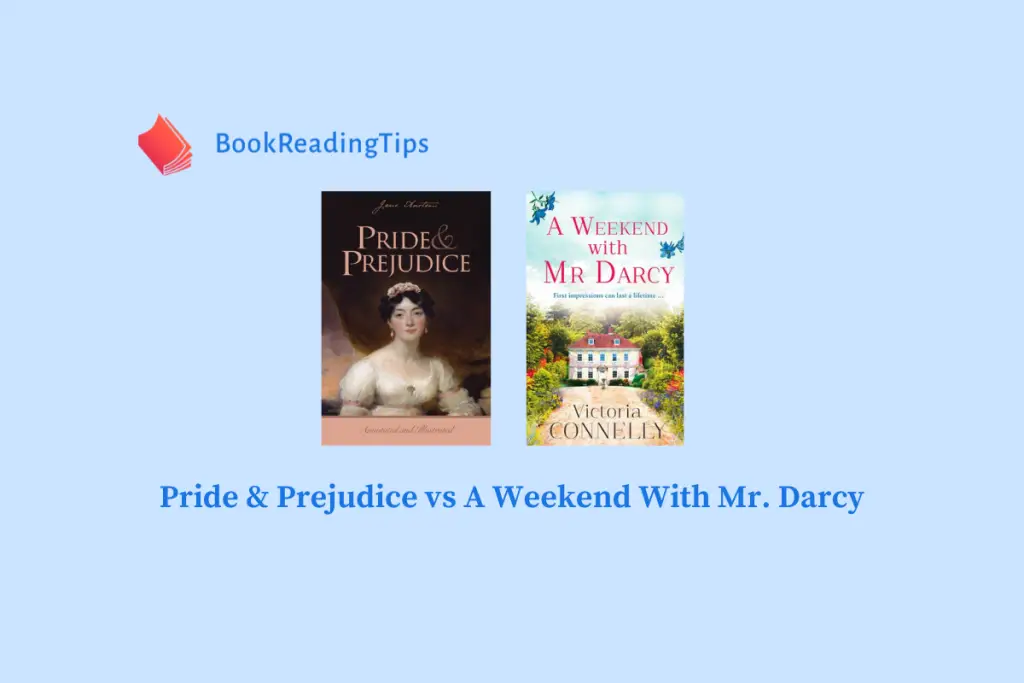Are you a fan of classic literature and modern romance novels? If so, you may have come across Pride and Prejudice and The Austen Playbook. Both books have captured the hearts of readers with their captivating storylines and memorable characters.
While Pride and Prejudice is a timeless classic written by Jane Austen in the 19th century, The Austen Playbook is a contemporary romance novel by Lucy Parker. Despite their differences in time period and writing style, both books explore themes of love, societal expectations, and personal growth.
If you enjoy historical romances with a touch of wit and social commentary, Pride and Prejudice is a must-read. On the other hand, if you prefer modern romances with relatable characters and humor, The Austen Playbook may be more to your liking. Whether you’re a fan of classic literature or contemporary romance, both books offer something for every reader to enjoy.
In the following article, I will delve deeper into the similarities and differences between Pride and Prejudice and The Austen Playbook. Join me as we explore the themes, characters, and overall impact of these two beloved books.
Table of Contents
- Core Principles of “Pride & Prejudice”
- Core Principles of “The Austen Playbook”
- Similarities & Differences Between Both Books
- FAQs
- 1. What is the difference between “Pride & Prejudice” and “The Austen Playbook”?
- 2. Are the themes in “Pride & Prejudice” similar to those in “The Austen Playbook”?
- 3. How do the main characters in “Pride & Prejudice” compare to those in “The Austen Playbook”?
- 4. Is the setting of “Pride & Prejudice” similar to the setting of “The Austen Playbook”?
- 5. Which book is more focused on romance: “Pride & Prejudice” or “The Austen Playbook”?
- 6. Are there any notable differences in writing style between “Pride & Prejudice” and “The Austen Playbook”?
- Conclusion
Core Principles of “Pride & Prejudice”

1. Themes of Love & Marriage
One of the central themes of “Pride and Prejudice” is love and marriage. The book explores the different types of love and relationships, from the passionate love between Elizabeth Bennet and Mr. Darcy to the practical considerations of marriage in the Regency era. Jane Austen delves into the complexities of social status, class, and personal values in the context of marriage, making it a timeless and relatable theme for readers of all ages.
2. Social Critique & Satire
Another core principle of “Pride and Prejudice” is its social critique and satire. Jane Austen uses the characters and their interactions to satirize the society of her time, particularly the rigid class distinctions, the emphasis on wealth and status, and the expectations placed on women to marry well. Through sharp wit and clever dialogue, Austen exposes the hypocrisy and absurdity of the upper-class society in which her characters navigate.
3. Character Development & Growth
The characters in “Pride and Prejudice” undergo significant development and growth throughout the novel. Elizabeth Bennet, in particular, learns to overcome her prejudices and misconceptions about Mr. Darcy, while he, in turn, learns humility and the importance of true love. The journey of self-discovery and personal growth that the characters undergo is a key aspect of the novel that resonates with readers and makes it a timeless classic.
Core Principles of “The Austen Playbook”

1. Modern Retelling of Austen’s Themes
“The Austen Playbook” takes inspiration from Jane Austen’s works and themes, but updates them for a modern audience. The book explores love, relationships, and societal expectations in the context of contemporary London, with a focus on career-driven women and the challenges they face in balancing personal and professional lives. The novel pays homage to Austen’s timeless themes while infusing them with a fresh and modern twist.
2. Strong Female Protagonist
One of the core principles of “The Austen Playbook” is its strong female protagonist, Freddy Carlton. Freddy is a successful playwright who navigates the challenges of the male-dominated theater world while also grappling with her own romantic dilemmas. Her independence, wit, and determination make her a compelling and relatable character for readers, showcasing the strength and resilience of modern women in pursuit of their dreams.
3. Humor & Romance
“The Austen Playbook” combines humor and romance in a delightful and engaging narrative. The witty banter between the characters, the romantic tension, and the comedic situations they find themselves in create a lighthearted and enjoyable reading experience. The novel strikes a perfect balance between humor and romance, making it a charming and entertaining story that captivates readers from beginning to end.
Similarities & Differences Between Both Books
Similarities
Themes: Both “Pride and Prejudice” and “The Austen Playbook” explore themes of love, class, and societal expectations. In both books, we see characters grappling with the constraints of their society and struggling to find their own path to happiness.
Strong Female Characters: One of the most striking similarities between the two books is the presence of strong, independent female characters. Elizabeth Bennet from “Pride and Prejudice” and Freddy Carlton from “The Austen Playbook” both defy societal norms and challenge the expectations placed upon them. They are intelligent, witty, and determined to forge their own destinies.
Romantic Relationships: Romance plays a central role in both books, with complex and engaging relationships at the heart of the stories. From the slow-burning love between Elizabeth and Mr. Darcy in “Pride and Prejudice” to the fiery chemistry between Freddy and Griff in “The Austen Playbook,” both novels explore the complexities of romantic relationships.
Differences
Setting: One of the key differences between the two books is the setting in which the stories take place. “Pride and Prejudice” is set in Regency-era England, with all the societal conventions and restrictions that come with it. In contrast, “The Austen Playbook” is set in modern-day London, giving the story a contemporary twist.
Tone: While both books have elements of wit and humor, the tone of each is slightly different. “Pride and Prejudice” has a more serious and introspective tone, with moments of social commentary and reflection. On the other hand, “The Austen Playbook” has a lighter, more playful tone, with a focus on banter and romantic tension.
Writing Style: Another notable difference between the two books is the writing style. Jane Austen’s prose in “Pride and Prejudice” is elegant and formal, reflecting the time period in which it was written. In contrast, Lucy Parker’s writing in “The Austen Playbook” is more modern and accessible, with a contemporary flair that resonates with readers today.
FAQs
1. What is the difference between “Pride & Prejudice” and “The Austen Playbook”?
“Pride & Prejudice” is a classic novel by Jane Austen, focusing on themes of love, class, and societal norms in 19th-century England. In contrast, “The Austen Playbook” is a modern romance novel by Lucy Parker, set in the world of theater, blending romance with wit and drama in contemporary London.
2. Are the themes in “Pride & Prejudice” similar to those in “The Austen Playbook”?
While both “Pride & Prejudice” and “The Austen Playbook” explore themes of love, societal expectations, and personal growth, the latter adds a contemporary twist by incorporating elements of theater and modern romance. Both works focus on relationships, social dynamics, and the complexities of human emotions but within different settings and contexts.
3. How do the main characters in “Pride & Prejudice” compare to those in “The Austen Playbook”?
The main characters in “Pride & Prejudice,” such as Elizabeth Bennet and Mr. Darcy, embody social class struggles and personal growth in Regency-era England. In contrast, “The Austen Playbook” features modern protagonists within the theater world, showcasing contemporary dynamics of love, ambition, and self-discovery in a vibrant London setting.
4. Is the setting of “Pride & Prejudice” similar to the setting of “The Austen Playbook”?
The setting of “Pride & Prejudice” is 19th-century England, focusing on societal norms and class distinctions. In contrast, “The Austen Playbook” is set in contemporary London within the theater world, blending modern romance with elements of drama and wit. The settings differ in time period and cultural backdrop but both explore themes of love and relationships.
5. Which book is more focused on romance: “Pride & Prejudice” or “The Austen Playbook”?
“The Austen Playbook” is more focused on romance compared to “Pride & Prejudice.” While both novels involve romantic elements, “The Austen Playbook” is a modern romance novel set in the world of theater, placing a strong emphasis on romantic relationships and dynamics within a contemporary setting.
6. Are there any notable differences in writing style between “Pride & Prejudice” and “The Austen Playbook”?
Yes, Jane Austen’s writing style in “Pride and Prejudice” is more formal and reflective of the time period in which it was written, while Lucy Parker’s writing style in “The Austen Playbook” is more modern and conversational.
Conclusion
In comparing Jane Austen’s classic novel, Pride and Prejudice, with Lucy Parker’s modern romance, The Austen Playbook, it becomes evident that both works share core principles of love, societal expectations, and personal growth. While Pride and Prejudice focuses on the social norms and class distinctions of 19th-century England, The Austen Playbook brings these themes into the contemporary world of theater and celebrity.
Both novels feature strong-willed heroines who must navigate the complexities of relationships and societal pressures. However, where Pride and Prejudice showcases the importance of overcoming prejudices and misconceptions, The Austen Playbook emphasizes the power of self-acceptance and pursuing one’s passions.
Readers who enjoy classic literature with a touch of romance and social commentary will appreciate Pride and Prejudice, while fans of modern romance and witty banter will find The Austen Playbook to be a delightful read. Ultimately, both books offer timeless lessons about love, self-discovery, and the importance of staying true to oneself in the face of societal expectations. Whether you’re a fan of historical romance or contemporary fiction, both Pride and Prejudice and The Austen Playbook have something to offer for every reader.




